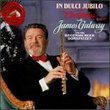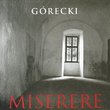| All Artists: Jorma Panula Title: ENGLUND: Symphonies Nos. 2 and 4 / Piano Concerto No. 1 Members Wishing: 0 Total Copies: 0 Label: Naxos Release Date: 7/29/2009 Genre: Classical Styles: Forms & Genres, Concertos, Historical Periods, Modern, 20th, & 21st Century, Symphonies Number of Discs: 1 SwapaCD Credits: 1 UPC: 730099475822 |
Search - Jorma Panula :: ENGLUND: Symphonies Nos. 2 and 4 / Piano Concerto No. 1
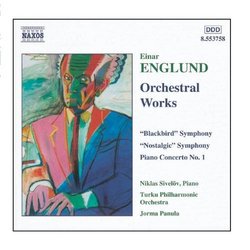 | Jorma Panula ENGLUND: Symphonies Nos. 2 and 4 / Piano Concerto No. 1 Genre: Classical
ENGLUND: Symphonies Nos. 2 and 4 / Piano Concerto No. 1 by Jorma Panula |
Larger Image |
CD DetailsSynopsis
Album Description ENGLUND: Symphonies Nos. 2 and 4 / Piano Concerto No. 1 by Jorma Panula Similar CDs
Similarly Requested CDs
|
CD ReviewsWonderful, underexposed composer Aaron Humphrey | Alamosa, CO United States | 10/03/2000 (5 out of 5 stars) "It truly is a shame that Englund is so overshadowed by Sibelius as a composer, especially considering the fact that he truly is his own man. While, like most Finnish composers, there certainly is a Sibelius influence, for the most part it's completely overblown. I'm much more struck by the affinities to Mahler or Ravel than anything else. Yet comparing Englund to others is, considering his own musical genius, little better than an insult--one which derives merely from a lack of exposure. I can only say that his music stands out as some of the best 20th century orchestral music I've heard. In light of this superb disc, I can only hope that Naxos decides to produce a series of his works like their Lutoslawski or Penderecki series'--considering the scarceness of Englund recordings it would be greatly appreciated." A whole new world Mark McCue | Denver, CO USA | 08/02/2000 (5 out of 5 stars) "I've enjoyed the Turku PO's recording of Englund's First Symphony for many years. It's wonderful that two more have come along with the first of the piano concerti.Englund's landscape is full of sunning seals on angular rocks, snow, wind, power, and the human spirit in the setting. His writing for winds is especially striking...in spots of the Fourth he seems to be experimenting with what winds can take over from strings. This allows strings to follow wood, and the result is crystalline without being barren or nude. It's striking and absorbing music that reveals more to you with the many moods you're likely to have.The piano concerto reminds me of the those by, of all people, Cammargo Guarnieri--big keyboard structures overlaying a dramatic and rich orchestra with the whole ebbing and flowing as if from some natural force. I mnight add that the concerto here could use a pianist with a slightly less percussive tone since the piano writing has plenty of mass to allow the instrument to stand out. However, the performance is very fluid, opens out nicely, and is a good advocate for an outstanding work that more Big Names would do well to take on (if any could find a conductor who would bother to learn the work). Otherwise, they'll have to start visiting Finland every year.The Turku Philharmonic, once Finland's weak sister, shows itself to be outplaying its oft-praised confreres. Listen and see what you think. Like me, you may be wanting to move this distinguished ensemble to the capital. And yes, city fathers, the orchestra deserves that new hall!" A Finnish Master Thomas F. Bertonneau | Oswego, NY United States | 10/03/2000 (5 out of 5 stars) "Writing in 1972, Robert Layton and Humphrey Searle together opined, in their survey of contemporary Finnish composers, that Einar Englund (1916-1999) possessed "perhaps the most natural and spontaneous musical gift" among his living countryman-peers; they referred also to his "Prokofievian exuberance and skill." Englund suffered, in the late 1950s and early 1960s, from the stubbornness of his principles: When the tide of serialism finally reached Finland and swept over its musical establishment, Englund held his own ground, argued against the artifice of the technique, and finally withdrew from composition for a period rather than offer himself as a target for those who considered themselves liberated and avant-garde. When he emerged again actively, the early enthusiasm for the Webern-Boulez style had faded, and listeners could appreciate anew the integrity and inventiveness of Englund's music-making. Foremostly he was a symphonist (the total of his symphonies finally reaching seven). The present disc from Naxos features the Second (1948) and the Fourth (1976) played by the Turku Philharmonic Orchestra under Jorma Panula. Like the First, the Second is a "war symphony," full of the turmoil of the events from 1939-45, in which Finland (and Englund himself as soldier of the fatherland) fulfilled an important, if forgotten, role. The First Movement, tumultuous, with outbursts in the brass and rattling martial tattoos in the percussion, will occasionally remind American listeners of Harris (Sixth Symphony). There is a quieter middle-section, with woodwind-arabesques that suggest the "Blackbird" of the work's subtitle. Without suggesting any influence, the Second Movement might be said to be reminiscent in mood of "The Field of the Dead" from Prokofiev's "Alexander Nevsky," the main difference being the intrusion of marchlike music at midpoint; the closing bars, with their recursion to quiet birsong in a nocturnal setting, qualify as truly uncanny and moving. The Finale is an impressive return to life. The Fourth Symphony uses comparatively spare language and is calmer in mood: It commemorates the deaths of Stravinsky and Shostakovich. The added attraction is the Piano Concerto (No. 1) from 1955, described in the notes as "Bartokian." This is more extrovert music than the symphonies. All the works on this CD are thoroughly enjoyable and convincing."
|

 Track Listings (10) - Disc #1
Track Listings (10) - Disc #1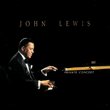
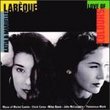
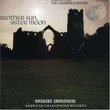

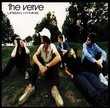
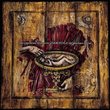
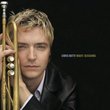
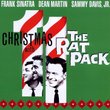
![Across The Universe [Deluxe Edition]](https://nationalbookswap.com/cd//m/51/1251/1241251.jpg)
